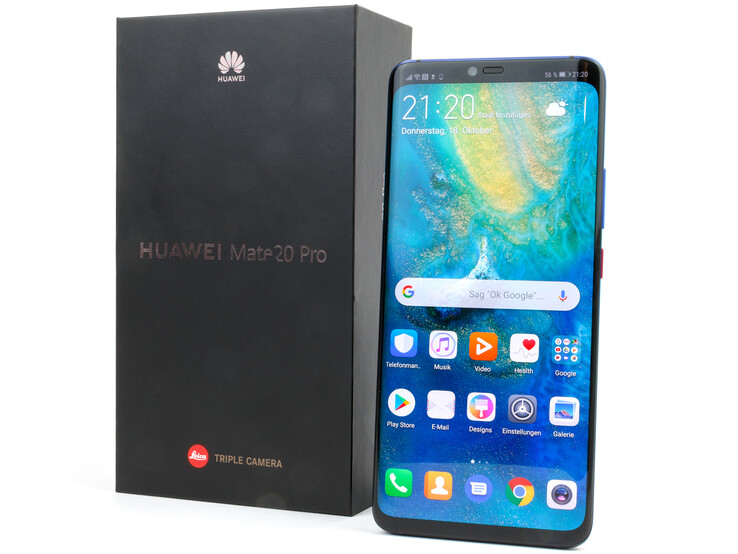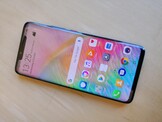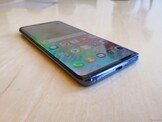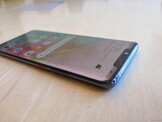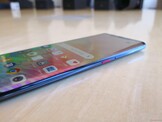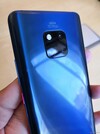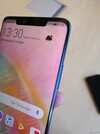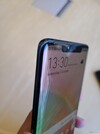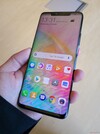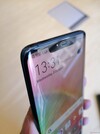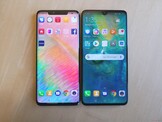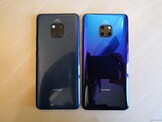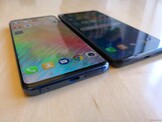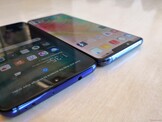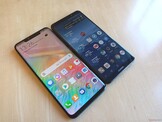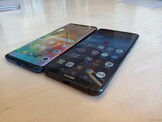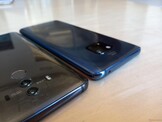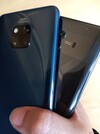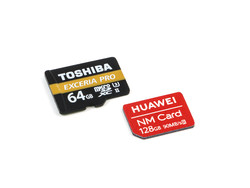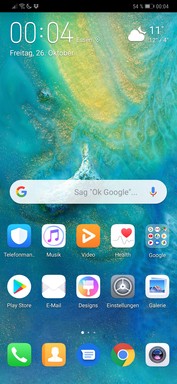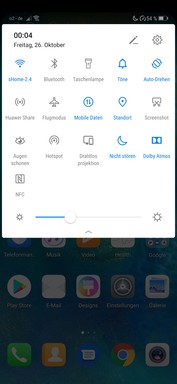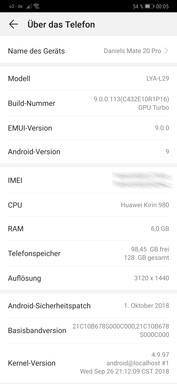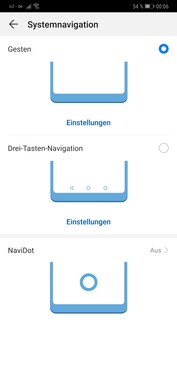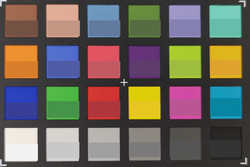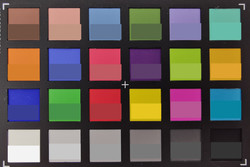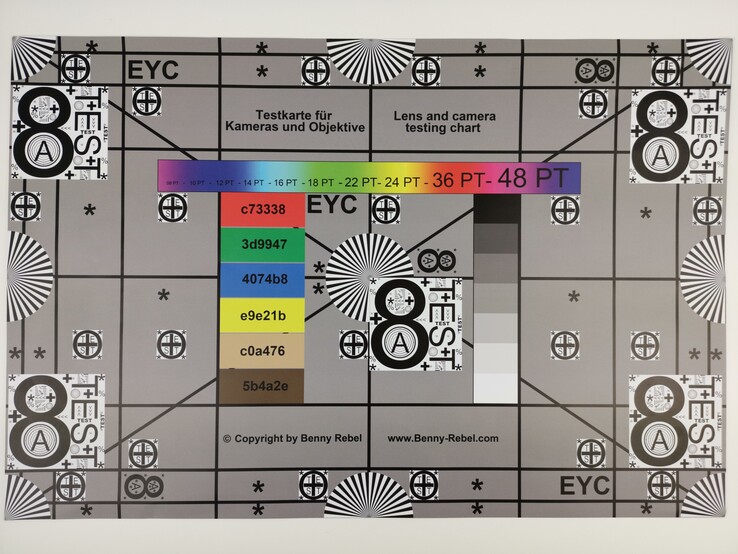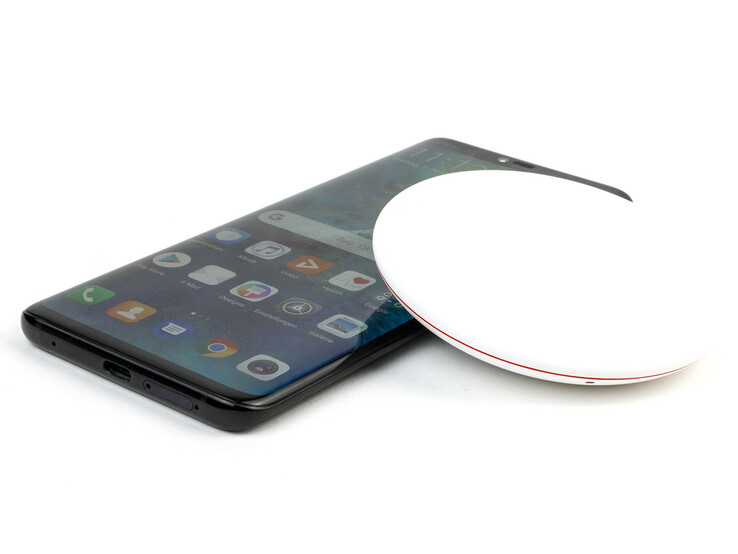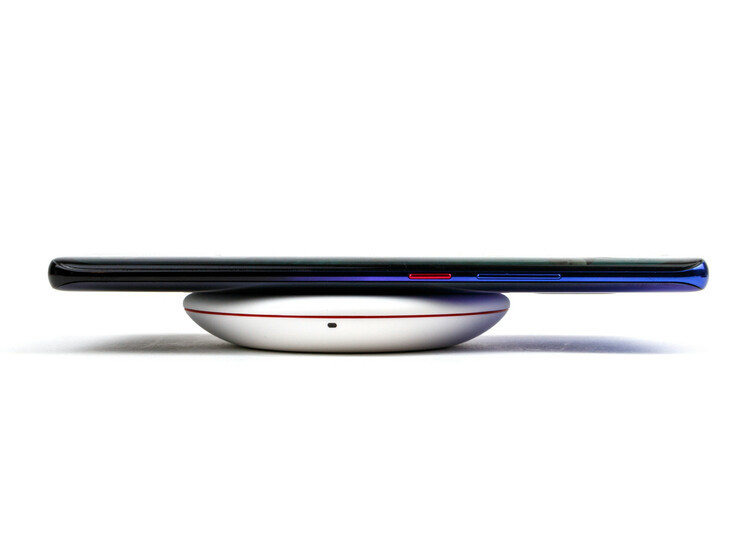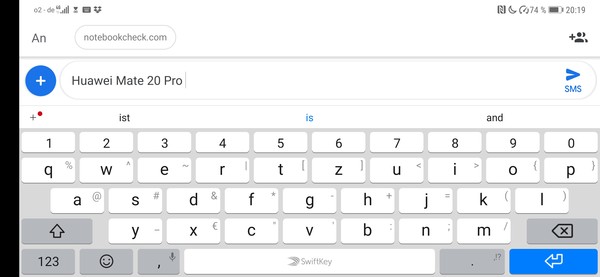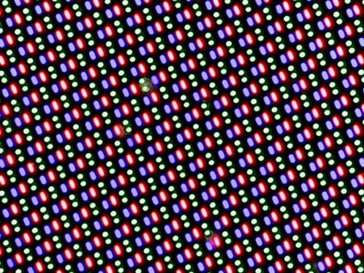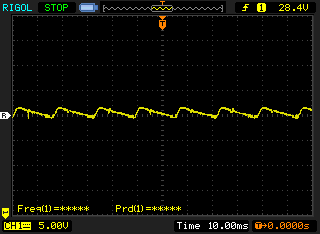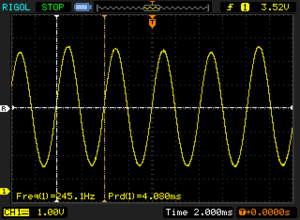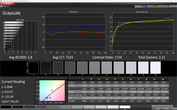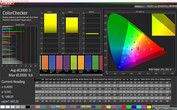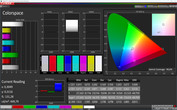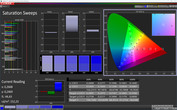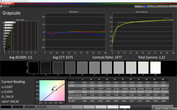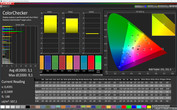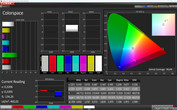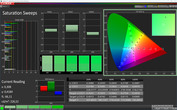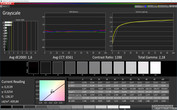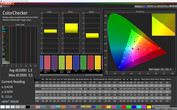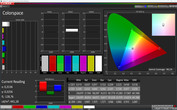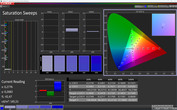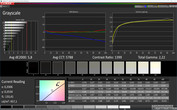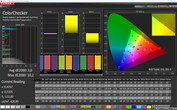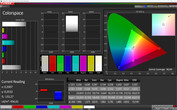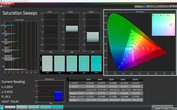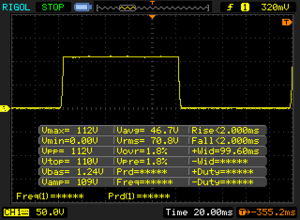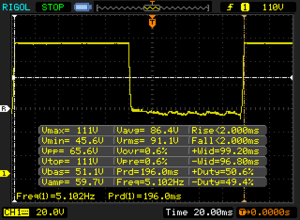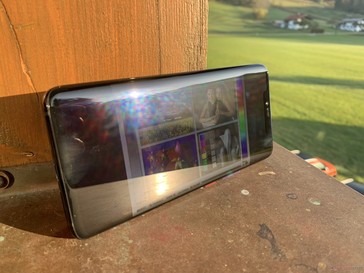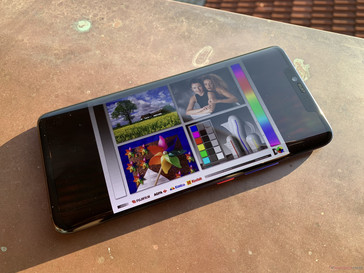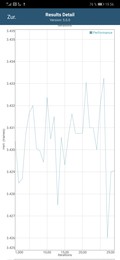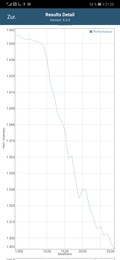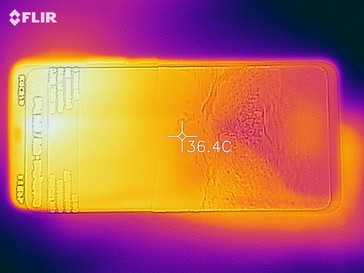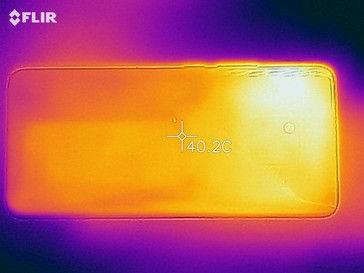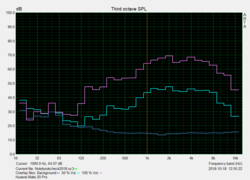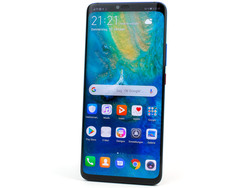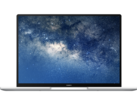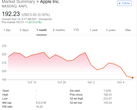Huawei Mate 20 Pro Smartphone Review
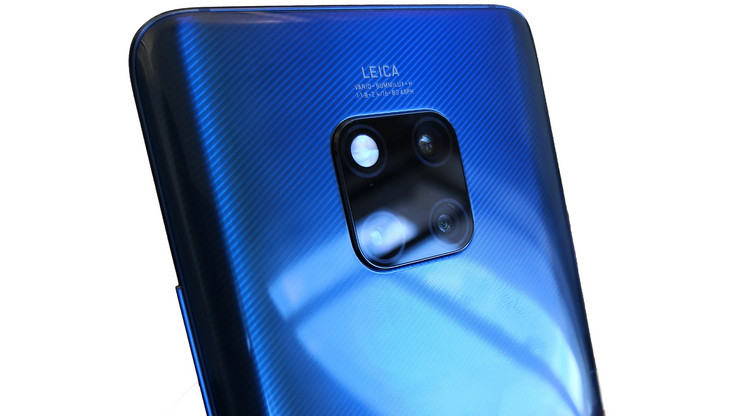
The Mate series has always been Huawei’s showcase smartphones. Previous Mate devices have been the first to receive the company’s latest innovations except for camera-related hardware, which Huawei has reserved for the P-series.
The lack of cutting-edge hardware let the Mate 10 Pro down, but no criticism could be levelled at its successor. The Mate 20 Pro has a 6.3-inch display with Huawei finally opting for a 1440p panel rather than the 1080p panel that was used in the Mate 10 Pro. Likewise, the Mate 20 Pro sports the brand-new HiSilicon Kirin 980 SoC, which Huawei manufacturers on a 7 nm FinFET process and promises will outperform Apple’s latest A12 Bionic SoC. The fingerprint sensor is also now underneath the display as we have seen with the Vivo NEX Ultimate or the Xiaomi Mi 8 Explorer Edition. Previously, Huawei had reserved this technology for its Porsche Edition devices.
The Leica-branded triple rear-facing camera looks like the one in the P20 Pro at first glance, but Huawei has added a wide-angle lens in favour of the monochrome sensor. The camera should also have great macro-performance thanks to its 5x optical zoom. The focus of the Mate 20 Pro’s cameras is undoubtedly the 40 MP rear-facing sensor, which should share all the great qualities of the P20 Pro’s main rear-facing camera. The Mate 20 Pro also flexes its muscles with its currently world-beating Cat. 21 LTE modem, Bluetooth 5.0 support, its NFC chip and its fast MIMO Wi-Fi. Huawei has also included a 4,200-mAh battery, which supports wired or wireless charging and is 200 mAh larger than its predecessor’s.
We have chosen to compare the Huawei Mate 20 Pro against other large flagship smartphones, including the Apple iPhone XS, HTC U12+, LG G7 ThinQ, OnePlus 6, Nokia 8 Sirocco, Samsung Galaxy Note 9 and the Sony Xperia XZ2 Premium.
This is a live review, which we will expand upon in due course.
- 10.16.2018: First impressions and photos.
- 10.18.2018: Display values, further benchmarks and photos added.
- 10.20.2018: Sections for Case, Connectivity and Communication added.
- 10.21.2018: Accessories, Warranty and Input Devices sections added; Performance section completed.
- 10.22.2018: Telephony and Temperature sections added; Display section expanded. First battery tests included.
- 10.25.2018: Sections added for Display and Software. GPS and Game sections finished.
- 10.26.2018: Review completed.
- 11.09.2018: Wi-Fi tests with final firmware and information about the Huawei wireless charger added.
Case
The case is constructed from a slim metal frame that is sandwiched between two sheets of Corning Gorilla Glass 5. Currently, the Mate 20 Pro is available in Black (Black), Blue (Midnight Blue), Green (Emerald Green) and Twilight. We have included Huawei’s colour names in brackets, for reference. Huawei has incorporated subtle black horizontal strips within the blue and green versions, which makes them grippier than the other colours. There is also a Pink Gold version, but Huawei does not currently sell this version worldwide.
The Mate 20 Pro is around 2.7 mm taller than the Mate 10 Pro and is 0.5 mm thicker at 8.6 mm thick. The device looks thinner though as both sides curve inwards, akin to the Samsung Galaxy S9. The rear-facing camera array protrudes from the back of the device, but Huawei has incorporated a metal frame within the housing to protect the camera-array glass from scratching.
Huawei has put the card slot on the underside of the device, but it supports nano memory cards instead of the traditional microSD card format. The Mate 20 Pro is also a dual SIM device, but you can only use two SIMs or a single SIM and a nano memory card. The card slot is plastic but feels sturdy and is practically the same colour as the rest of the case. We only noticed a slight colour difference when looking at the device closely under bright ambient light, so it is not noticeable in daily use. The case is also IP68-rated against dust and is submersible in up to two metres of water. Huawei sells an optional underwater case that protects the device for in up to five metres of water. The battery is fixed in place and is not user removable.
Our test device is well-constructed with even, yet tight gaps between materials. The distance between glass and metal is greater at the corners of the device because of its rounded edges, but this is by design and not a manufacturing issue. Our test device creaked slightly when we applied pressure to the case, but overall the Mate 20 Pro is a robust smartphone.
The Huawei Mate 20 Pro
The Huawei Mate 20 Pro and Mate 20 side by side.
The Huawei Mate 20 Pro and Mate 20 side by side.
Connectivity
Huawei did not include microSD-card support with the Mate 10 Pro, which was the first in the Mate series to lack expandable memory. Companies do not tend to reintroduce expandable storage once they have removed it from a smartphone series, except for Samsung with the Galaxy S7. Huawei has reversed its decision too, but the Mate 20 Pro supports nano memory cards rather than microSD cards, as we mentioned above. Nano memory cards should be around 40% smaller than their microSD counterparts, but they will only be available in 64, 128 and 512 GB formats at launch. Moreover, Germany will only see the 128 GB version initially, and it will cost approximately 50 Euros (~$56). We cannot give a precise figure as prices had not been confirmed at the time of writing.
Nano memory cards should achieve up to 90 MB/s read speeds, but potential write speeds are still unconfirmed at the time of writing. The concept of a new smaller memory card has yet to convince us though. While having a smaller card is good for freeing up space within a device, nano memory cards currently cost more per GB than their microSD counterparts and are limited to being formatted as external storage. The Mate 20 Pro cannot format a nano memory card as internal storage, meaning that apps and data can only be stored on its flash memory.
Huawei has equipped its latest flagship well in other areas though. The Mate 20 Pro supports Bluetooth 5.0 with aptX HD, LTE Cat. 21, NFC, and MIMO Wi-Fi. Likewise, Huawei has included an infrared transmitter for controlling devices like stereos and TVs and has equipped the Mate 20 Pro with a USB 3.1 Type-C port that supports USB On-The-Go (OTG) and image output over HDMI or DisplayPort.
There is also not only Qi 15 W wireless charging but also reverse wireless charging, which allows the Mate 20 Pro to act as a portable wireless charger should you need to charge your other devices or with friend’s devices. Huawei has utilised an in-display fingerprint sensor and infrared facial recognition for biometric authentication. Our test device has a 40 W fast charger in the box too.
If we were to criticise Huawei, at best we would have liked to see a heart-rate sensor and an FM radio transmitter. These are not as important as what Huawei has chosen to include. In short, the Mate 20 Pro is currently the best-equipped smartphone on the market.
Huawei has moved the notification LED to within the notch, but this can only be turned on or off and not configured. The device has an always-on display too that shows battery status, the date, the time and the weekday. Unfortunately, other information is scant. The AoD lists the volume of SMS messages received but does not currently support third-party notifications.
Software
Huawei has equipped the Mate 20 Pro with EMUI 9.0, its customized version of Android 9.0 Pie. EMUI 9.0 brings minor visual adjustments compared to stock Android, but Huawei promises that its latest OS will be up to 47% faster than EMUI 8.2 and 51% at loading applications. Huawei has also tightened up the menu options, reducing them to 843 from 940 in EMUI 8.2. Additionally, Huawei has renewed its “Stay Fast” promise, with the company claiming that the Mate 20 Pro will retain 95% of its initial performance after 18 months of use.
Our test device has the latest Android security patches and version of EMUI at the time of writing. We expect that Huawei will roll-out two major OS updates to the Mate 20 Pro and keep the device updated with new Android security patch releases. Huawei has also incorporated Google User Account Control and Digital Balance, the latter of which helps manage screen-time usage.
The standard Huawei on-screen button array is shown by default, but these can be hidden for more screen space should you wish. Huawei has included gesture control features too, which are like the ones that the iPhone XS uses.
Communication & GPS
The Mate 20 Pro supports a wide range of 2G, 3G and LTE frequencies, making the device suitable for worldwide use. Huawei has included the first Cat. 21 LTE modem too, which supports up to 1.4 Gb/s download speeds. The company has also touted up to 120% better antenna performance compared to the Mate 10 Pro, which Huawei reports should result in lower signal attenuation. Our tests do not confirm this though. The Mate 20 Pro has slightly better 2G reception on O2 Germany than its predecessor, but that is a far cry from Huawei’s claims. With that said, our test device has great everyday mobile connectivity and experienced no issues during our tests.
The device has a MIMO Wi-Fi antenna too, which is another upgrade over its predecessor. The Mate 20 Pro supports all modern Wi-Fi connections including 802.11 a/b/g/n/ac standards and either 2.4 GHz or 5 GHz networks. Huawei went as far to say at its press conference that the Mate 20 Pro has the fastest Wi-Fi connectivity of any current smartphone and could reach up to 1,733 Mbps. Again, our tests confirm otherwise with our test device achieving half of Huawei’s quoted speeds at best.
Our test device scores highly when tested with our Linksys EA8500 reference router, but not without weaknesses. The Mate 20 Pro finished behind all our comparison devices when we tested how quickly it could receive data over Wi-Fi. Connection speeds varied greatly too. This is not too much of an issue when using the device close to a router, but it could prove problematic when you are sat some distance from it. We hope that Huawei issues an update that rectifies this as our Mate 20 Pro takes the crown in our Wi-Fi transmission speed tests. Our test device has good Wi-Fi range in daily use too.
Addendum 11.09.2018:
We also re-ran our iperf3 Client Wi-Fi tests with retail firmware installed on our review unit. The reception improved massively with the new firmware and meant that our test device could maintain high transfer speeds more stably when placed far from our reference router. However, the better Wi-Fi reception has come at a cost to peak transfer speeds, which are slightly lower than those that we measured with the Mate 20 Pro running pre-release firmware. In short, the Wi-Fi issues that we initially experienced have been fixed.
The Mate 20 Pro uses BeiDou, Galileo, GLONASS, GNSS and GPS for location services. The device also supports two satellite frequencies for greater positioning accuracy. The Mate 20 Pro uses not only the standard L1 satellite frequency but also the L5 frequency, which is more accurate and efficient for determining positioning.
The combination of these technologies helps make our test device impressively accurate at finding our location even when we are on the move. The device needs a moment to find a satellite fix when we tested it on a train and around 15 seconds to settle on an accuracy of up to five metres.
We also took the Mate 20 Pro on a car ride to compare its location accuracy against a Garmin Edge 500, a professional navigation device. Our test device recorded us having driven around 40 metres more over a 77 km car journey than our Garmin, which makes the Mate 20 Pro an incredibly accurate device. Moreover, our test device even plotted our route slightly more accurately than the Garmin; not many other devices have managed such a feat.
Telephone Functions & Call Quality
The Mate 20 Pro has three microphones like its predecessors, which provide outstanding call quality. Both sides of calls sounded clear during testing, while the microphones adequately filtered out background noise. Calls over speakerphone are equally impressive. The speaker is loud enough, and the microphones being sufficiently sensitive for us to lie our test device on a table without affecting call quality. We noticed a weak echo when making calls over speakerphone compared to over the earpiece, but this did not distract either end of the call during testing.
The Mate 20 Pro supports dual voice over LTE (VoLTE) and voice over Wi-Fi (VoWiFi).
Cameras
The Mate 20 Pro has Leica-branded triple rear-facing cameras just like the P20 Pro but uses a comparatively large 1/1.7-inch image sensor. Huawei has ditched the P20 Pro’s monochrome sensor in favour of a wide-angle lens as the latter is no longer needed for taking high-quality photos. The 40 MP main camera, with its f/1.8 aperture, is technically the brightest of the trio. The 8 MP telephoto sensor makes another welcome appearance too with 80 mm wide lens, OIS and an f/2.4 aperture. The big camera change from the P20 Pro is the 20 MP ultra-wide-angle sensor that has an f/2.2 aperture and a 16 mm focal length. This is enhanced by a 5x hybrid zoom (135 mm) and up to 10x digital zoom (270 mm). Huawei includes its AI optimization that we saw on the P20 Pro too.
Moreover, photos taken with the Mate 20 Pro have brighter colours, higher dynamics and are captured in much greater detail than on the Mate 10 Pro. The rear-facing cameras are particularly impressive when taking panoramic shots at night, a scenario in which the Mate 20 Pro is now the standard for other smartphones to beat. The differences are not as great when taking photos of objects though. The Mate 20 Pro is on par with the P20 Pro in this respect, partially because the device compensates for the lack of a monochrome sensor with better-optimised software algorithms, which Huawei calls “Super HDR”.
“Super HDR” combines multiple shots into one large image that should result in better dynamics and more accurate lighting. These processes are akin to what Apple and Google use in their latest flagship devices. The Mate 20 Pro has a larger main camera sensor than its competitors, so we took some example photos in the device’s 10 MP mode with Master AI also activated for a truer comparison with the iPhone XS. Our test device takes well-lit photos in low-light, but the same shot is captured in greater detail by the iPhone XS. The 10 MP mode does take richly detailed photos though and especially impresses in daytime shots.
The Mate 20 Pro has the same video-recording capabilities as the P20 Pro and can record videos in up to Ultra HD at 30 FPS. However, shooting videos in 60 FPS is only possible in up to Full HD. Moreover, 60-FPS videos lack Huawei’s AI image stabilization, which only works at up to 30 FPS. The stabilization works well when used though. The microphones work well too and recorded clean stereo audio throughout testing.
The front-facing camera is seemingly identical to that which Huawei used in the P20 Pro, but it produced lower quality results in our tests. The dynamic range and sharpness are impressive, but the bokeh effect is sloppy and frequently produces artefacts within images. Likewise, while Huawei has expanded the portrait mode, the pre-release software running on our device does not meet expectations. Photos taken in portrait mode have more image noise than those in other modes, and our test device particularly struggles to correctly expose people who are stood in front of a busy background. In short, the iPhone XS produces better portrait photos than the Mate 20 Pro.
Image comparison
Choose a scene and navigate within the first image. One click changes the position on touchscreens. One click on the zoomed-in image opens the original in a new window. The first image shows the scaled photograph of the test device.
Photos taken with the Huawei Mate 20 Pro
We also took a closer look at the Mate 20 Pro's triple camera under controlled lighting conditions. Our test device reproduces colours strongly and while skin tones are slightly brightened, the white balance is somewhat warmer than we would have liked. The wide-angle lens performs similarly to the main camera but reproduces colours more darkly.
The Mate 20 Pro captures our test chart well. The chart looks sharp at the centre of the image, albeit fine details are not as sharp as they could be. By contrast, our test device accurately reproduces coloured surfaces and even dark text that is set against dark backgrounds. Our test chart has a slight curvature to it when captured by the wide-angle sensor, but this is more subtle than other devices like the LG G7 ThinQ.
Accessories & Warranty
Huawei includes a 40 W SuperCharge charger (5V/2A, 9V/2A, 10V/4A) in the box along with a USB Type-A to Type-C cable, a quick-start guide, a SIM tool and a set of headphones. The company sells additional accessories on its website too, including simple silicone cases or hinged versions with integrated stands. Moreover, Huawei has also designed an underwater case that protects the Mate 20 Pro against water damage when submerged in water up to five metres deep. There is a Qi wireless charger too, but the Mate 20 Pro can wirelessly charge with non-Huawei Qi wireless chargers, including those from Apple, IKEA, Nokia or Samsung.
The Mate 20 Pro comes with 24 months non-extendible manufacturer’s warranty. Please see our Guarantees, Return policies and Warranties article for country-specific information.
Addendum 11.09.2018:
We have since got our hands on a Huawei wireless charger too. The charger has a comparatively large surface area, but it holds our review unit in place well thanks to its rubberised coating. There is a rubber ring on the bottom of the charger too, which stops it from moving around on a desk or a table. Huawei has integrated a small white status LED that informs you whether it is, or has finished, charging your device.
The wireless charger operates on the Qi standard and worked perfectly with an iPhone XS and a Galaxy S9. The charger should be able to penetrate through up to 3 mm cases too. Huawei includes a 40 W SuperCharger and a corresponding USB Type-C cable to provide the wireless charger with power. The wireless charger is rated at 15 W, and retails for £59.99 (~ US$77).
Input Devices & Operation
The device has a 10-point multitouch touchscreen that is protected by Corning Gorilla Glass 5, the surface of which is slick and offers little resistance to fingers. Our test device recognises inputs accurately and quickly across its entire display. We had no problems with the rounded corners either.
Since the Mate 20 Pro is IP68-rated, you technically could take your device for a spot of underwater photography. Using a touchscreen underwater can be tricky though as water interferes with inputs and even creates phantom touches. However, Huawei has developed a special underwater camera mode to combat this, which deactivates the touchscreen except to allow users to disable the mode and remaps all camera controls to the power and volume buttons. The camera UI changes too so that only the viewfinder is shown.
Swype is the default keyboard on our test device, but this is replaceable with any keyboard app from the Google Play Store. There are also knuckle gestures, which we have seen on other Huawei devices. Our test device’s vibration motor is quiet and discreet too.
The Mate 20 Pro also has an in-screen fingerprint sensor, the technology for which we have seen in the Porsche Design Huawei Mate RS and the VIVO Nex Ultimate. The in-screen fingerprint sensor is practically invisible and takes up less space than other fingerprint sensors that are traditionally below the display or on the back case. The sensor unlocks our test device quickly in daily use and takes us directly to the home screen. Huawei has included an animation to help users find the fingerprint sensor in the dark, but it is too bright for our liking. The in-screen fingerprint sensor is easily reachable when using the device with one hand and there is a one-handed mode should you occasionally need an effectively smaller display. However, the Mate 20 Pro has such a large display that we found it rather tricky to hold the device in one hand and focus our touches on one corner of the display.
Huawei has doubled-down on biometric security and has included an infrared-based 3D face unlock. The company has stated that the infrared scanner may authenticate similar-looking people, so it is not as secure as the Mate 20 Pro’s fingerprint sensor. Our test device recognised us quickly and reliably in daily use. The feature even worked well in the dark, although the 3D face unlock only opens the device to the lock screen rather than directly to the home screen as the fingerprint sensor does.
Display
The Mate 20 Pro has a 6.39-inch OLED display with rounded corners that are akin to the Galaxy S9. Huawei has increased the resolution to 3120x1440 from the 2160x1080 panel in last year’s Mate 10 Pro, which results in a pixel density bump to 545 PPI from 402 PPI. However, a look at the sub-pixel array highlights that Huawei has equipped the Mate 20 Pro with a PenTile matrix panel, which is not as sharp as their RGB counterparts. Samsung has also been using PenTile matrix panels in its cheaper smartphones because its displays have high pixel densities. However, our comparison devices like the Xperia XZ2 Premium not only have UHD displays but also double the number of sub-pixels that the Mate 20 Pro has. Please keep in mind that you must manually switch the Xperia XZ2 Premium to enjoy its maximum resolution permanently as the device automatically alters its resolution according to what is onscreen.
Our test device has a slightly darker display than its predecessor, but it is brighter than most of our other comparison devices. According to X-Rite i1Pro 2, the Mate 20 Pro reaches an average maximum brightness of 582 cd/m² with the brightness sensor activated. However, the more realistic APL50 test, which distributes dark and light areas evenly over the display to measure luminosity, records our test device as reaching over 800 cd/m² maximum brightness.
The Mate 20 Pro uses pulse-width modulation (PWM) to regulate display brightness, but then most OLED-equipped devices do. The amplitude curve is so flat though that most people should have no issues despite the comparatively low PWM frequency, which we measure at 245.1 Hz. At 100% brightness, the PWM frequency then drops to a more economical 60 Hz, but we could not adjust this manually as the maximum brightness is limited to around 460 cd/m², which is below the luminosity when the 60 Hz frequency kicks in.
Huawei has incorporated a night mode and the natural tone display technology that we first saw in the P20 Pro. The former reduces the number of blue light waves that the display emits, which creates a warmer and more eye-friendly colour temperature, while the latter automatically adjusts the white balance and colour reproduction for the most natural-looking colours in changing lighting conditions.
The Mate 20 Pro also supports HDR10 and DolbyVision, which should please those who like watching videos on their smartphone.
| |||||||||||||||||||||||||
Brightness Distribution: 90 %
Center on Battery: 576 cd/m²
Contrast: ∞:1 (Black: 0 cd/m²)
ΔE ColorChecker Calman: 1.3 | ∀{0.5-29.43 Ø4.78}
ΔE Greyscale Calman: 1.6 | ∀{0.09-98 Ø5}
99.1% sRGB (Calman 2D)
Gamma: 2.18
CCT: 6561 K
| Huawei Mate 20 Pro OLED, 3120x1440, 6.3" | Huawei Mate 10 Pro OLED, 2160x1080, 6" | Samsung Galaxy S9 Plus Super AMOLED, 2960x1440, 6.2" | Sony Xperia XZ2 Premium LCD-IPS, 3840x2160, 5.8" | Apple iPhone Xs Max OLED, 2688x1242, 6.5" | LG G7 ThinQ IPS, 3120x1440, 6.1" | OnePlus 6 Optic AMOLED, 2280x1080, 6.3" | Xiaomi Mi 8 Explorer Edition Super AMOLED, 2248x1080, 6.2" | |
|---|---|---|---|---|---|---|---|---|
| Screen | -10% | -22% | -40% | 1% | -110% | -35% | -62% | |
| Brightness middle (cd/m²) | 576 | 629 9% | 565 -2% | 477 -17% | 656 14% | 974 69% | 430 -25% | 429 -26% |
| Brightness (cd/m²) | 582 | 636 9% | 571 -2% | 453 -22% | 659 13% | 975 68% | 437 -25% | 432 -26% |
| Brightness Distribution (%) | 90 | 94 4% | 96 7% | 86 -4% | 88 -2% | 96 7% | 87 -3% | 88 -2% |
| Black Level * (cd/m²) | 0.33 | 0.49 | ||||||
| Colorchecker dE 2000 * | 1.3 | 1.7 -31% | 2.3 -77% | 2.1 -62% | 1.7 -31% | 5.4 -315% | 2.3 -77% | 3.39 -161% |
| Colorchecker dE 2000 max. * | 3.5 | 3.6 -3% | 4.8 -37% | 8.2 -134% | 2.8 20% | 13.1 -274% | 4.6 -31% | 5.25 -50% |
| Greyscale dE 2000 * | 1.6 | 2.4 -50% | 1.9 -19% | 1.6 -0% | 1.7 -6% | 5 -213% | 2.4 -50% | 3.3 -106% |
| Gamma | 2.18 101% | 2.15 102% | 2.16 102% | 2.28 96% | 1.998 110% | 2.31 95% | 2.28 96% | 2.238 98% |
| CCT | 6561 99% | 6337 103% | 6332 103% | 6425 101% | 6487 100% | 7480 87% | 6160 106% | 7135 91% |
| Contrast (:1) | 1445 | 1988 |
* ... smaller is better
Screen Flickering / PWM (Pulse-Width Modulation)
| Screen flickering / PWM detected | 245.1 Hz | ≤ 99 % brightness setting | |
The display backlight flickers at 245.1 Hz (worst case, e.g., utilizing PWM) Flickering detected at a brightness setting of 99 % and below. There should be no flickering or PWM above this brightness setting. The frequency of 245.1 Hz is relatively low, so sensitive users will likely notice flickering and experience eyestrain at the stated brightness setting and below. In comparison: 53 % of all tested devices do not use PWM to dim the display. If PWM was detected, an average of 8108 (minimum: 5 - maximum: 343500) Hz was measured. | |||
Our test device can theoretically reproduce absolute blacks as its OLED can switch off pixels individually. This applies to the contrast ratio too.
We also used CalMAN analysis software to determine how accurately our test device reproduces colours. Huawei promises that the Mate 20 Pro has a large colour gamut based on DCI-P3 colour space, but our test device fails to live up to expectations. CalMAN highlights that our test device covers almost all the DCI-P3 colour space in its default colour profile, but colour accuracy is average at best. There is a slight blue tint to the display by default and colours are oversaturated, but setting the colour profile to “Normal” and the white balance to standard rectifies these issues somewhat.
Our test device has practically ideal colour temperatures though, hence why grey tones are almost perfectly reproduced with only a hint of yellow on bright surfaces. The “Normal” colour profile accurately reproduces colours overall, although it is based on the smaller sRGB colour space; this is barely noticeable in daily use though.
Display Response Times
| ↔ Response Time Black to White | ||
|---|---|---|
| 4 ms ... rise ↗ and fall ↘ combined | ↗ 2 ms rise | |
| ↘ 2 ms fall | ||
| The screen shows very fast response rates in our tests and should be very well suited for fast-paced gaming. In comparison, all tested devices range from 0.1 (minimum) to 240 (maximum) ms. » 15 % of all devices are better. This means that the measured response time is better than the average of all tested devices (20.2 ms). | ||
| ↔ Response Time 50% Grey to 80% Grey | ||
| 4 ms ... rise ↗ and fall ↘ combined | ↗ 2 ms rise | |
| ↘ 2 ms fall | ||
| The screen shows very fast response rates in our tests and should be very well suited for fast-paced gaming. In comparison, all tested devices range from 0.165 (minimum) to 636 (maximum) ms. » 14 % of all devices are better. This means that the measured response time is better than the average of all tested devices (31.6 ms). | ||
The Mate 20 Pro remains usable outdoors, despite its display’s comparatively low maximum brightness. Our test device is easy to read even in direct sunlight, with the ambient light sensor changing display luminosity quickly and accurately.
Performance
The Mate 20 Pro is the first smartphone that is powered by a HiSilicon Kirin 980 SoC, which Huawei manufactures on a 7 nm FinFET process. Apple is the only other manufacturer to release a 7 nm chip with its A12 Bionic. By contrast, Qualcomm and Samsung will probably take until next year to release an equivalent SoC. The Kirin 980 has two ARM Cortex-A76 power cores that clock up to 2.6 GHz and two Cortex-A55 power-saving cores that reach up to 1.9 GHz. There is also an ARM Mali-G76 MP10 GPU and an improved dual-core neural processing unit (NPU).
The Mate 20 Pro has 6 GB of 2,133 MHz LPDDR4x RAM, which along with the other Mate 20 devices, is the first smartphone to have such fast RAM. Huawei also promises that the Kirin 980 should have up to a 75% faster CPU and up to 46% better GPU performance than its predecessor.
Geekbench 4.1/4.2 somewhat confirms this CPU performance boost as the Mate 20 Pro is 78% faster than its predecessor in the single-core benchmark but scores only 48% higher in the multi-core benchmark. The Kirin 980 finished second only to the Apple A12 Bionic in the former, while in the latter our test device finished behind both the A12 Bionic and the Samsung Exynos 9810. The Kirin 980 comfortably beat all Qualcomm Snapdragon 845-powered devices in both Geekbench benchmarks though.
Our test device finished top of our comparison table in all the physics portions of 3DMark too. The Mate 20 Pro does not cheat in benchmarks either, as we caught some other Huawei smartphones doing.
The picture is less rosy for GPU performance. Our test device scored lower than its predecessor in the off-screen portion of the GFXBench 3.1 Manhattan benchmark, which is probably because the Mate 20 Pro’s higher resolution display always applies in on-screen tests. It is a different story in Basemark ES 3.1 though, where our test device finishes with twice the performance of its predecessor. The Mate 20 Pro largely meets Huawei’s claims in the GPU portions of 3DMark, but the ARM Mali-G76 MP10 is consistently beaten by the Adreno 630 that Qualcomm has integrated within its Snapdragon 845 SoC. Overall, the Mali-G76 MP10 is a powerful GPU but Huawei would have to include a few more cores for it to be the best GPU on the market.
By contrast, the Mate 20 Pro shines in system performance benchmarks like AnTuTu, Basemark OS II, and PCMark. Our test device feels snappy, but we noticed a few small stutters during testing.
| Basemark GPU 1.1 | |
| 1920x1080 Vulkan Medium Offscreen (sort by value) | |
| Huawei Mate 20 Pro | |
| Huawei Mate 10 Pro | |
| OnePlus 6 | |
| LG G7 ThinQ | |
| Average HiSilicon Kirin 980 (25.6 - 30.7, n=2) | |
| Vulkan Medium Native (sort by value) | |
| Huawei Mate 20 Pro | |
| Huawei Mate 10 Pro | |
| OnePlus 6 | |
| LG G7 ThinQ | |
| Average HiSilicon Kirin 980 (16.9 - 28.5, n=2) | |
| 1920x1080 OpenGL Medium Offscreen (sort by value) | |
| Huawei Mate 20 Pro | |
| Huawei Mate 10 Pro | |
| OnePlus 6 | |
| LG G7 ThinQ | |
| Average HiSilicon Kirin 980 (27 - 29.1, n=2) | |
| VRMark - Amber Room (sort by value) | |
| Huawei Mate 20 Pro | |
| Huawei Mate 10 Pro | |
| OnePlus 6 | |
| LG G7 ThinQ | |
| Average HiSilicon Kirin 980 (5020 - 5025, n=2) | |
| Basemark ES 3.1 / Metal - offscreen Overall Score (sort by value) | |
| Huawei Mate 20 Pro | |
| Huawei Mate 10 Pro | |
| Samsung Galaxy S9 Plus | |
| Apple iPhone Xs Max | |
| OnePlus 6 | |
| LG G7 ThinQ | |
| Average HiSilicon Kirin 980 (1571 - 1627, n=2) | |
| Average of class Smartphone (205 - 7731, n=36, last 2 years) | |
Our test device also has excellent browser performance. Websites load quickly and without issue in daily use, while the Mate 20 Pro finishes second only to the XS Max in browser benchmarks.
| JetStream 1.1 - Total Score | |
| Apple iPhone Xs Max (Safari 12) | |
| Huawei Mate 20 Pro (Chrome 69) | |
| Average HiSilicon Kirin 980 (93.2 - 109.9, n=9) | |
| LG G7 ThinQ (Chrome 66) | |
| OnePlus 6 (Chrome 66) | |
| Xiaomi Mi 8 Explorer Edition (Chrome 69) | |
| Sony Xperia XZ2 Premium (Chrome 68) | |
| Samsung Galaxy S9 Plus (Samsung Browser 7.0) | |
| Huawei Mate 10 Pro (Chrome 61) | |
| Octane V2 - Total Score | |
| Average of class Smartphone (2228 - 121337, n=201, last 2 years) | |
| Apple iPhone Xs Max (Safari 12) | |
| Huawei Mate 20 Pro (Chrome 69) | |
| Average HiSilicon Kirin 980 (20618 - 23285, n=10) | |
| OnePlus 6 (Chrome 66) | |
| LG G7 ThinQ (Chrome 66) | |
| Samsung Galaxy S9 Plus (Samsung Browser 7.0) | |
| Xiaomi Mi 8 Explorer Edition (Chrome 69) | |
| Sony Xperia XZ2 Premium (Chrome 68) | |
| Huawei Mate 10 Pro (Chrome 61) | |
| Mozilla Kraken 1.1 - Total | |
| Huawei Mate 10 Pro (Chrome 61) | |
| Sony Xperia XZ2 Premium (Chrome 68) | |
| LG G7 ThinQ (Chrome 66) | |
| OnePlus 6 (Chrome 66) | |
| Xiaomi Mi 8 Explorer Edition (Chrome 69) | |
| Average HiSilicon Kirin 980 (1948 - 3098, n=10) | |
| Samsung Galaxy S9 Plus (Samsung Browser 7.0) | |
| Huawei Mate 20 Pro (Chrome 69) | |
| Average of class Smartphone (257 - 28190, n=156, last 2 years) | |
| Apple iPhone Xs Max (Safari 12) | |
| WebXPRT 3 - Overall | |
| Average of class Smartphone (38 - 380, n=34, last 2 years) | |
| Apple iPhone Xs Max (Safari 12) | |
| Huawei Mate 20 Pro (Chrome 69) | |
| Average HiSilicon Kirin 980 (86 - 124, n=10) | |
| OnePlus 6 (Chrome 66) | |
| LG G7 ThinQ (Chrome 66) | |
| Sony Xperia XZ2 Premium (Chrome 68) | |
| Samsung Galaxy S9 Plus | |
| WebXPRT 2015 - Overall | |
| Apple iPhone Xs Max (Safari 12) | |
| Huawei Mate 20 Pro (Chrome 69) | |
| Average HiSilicon Kirin 980 (228 - 334, n=5) | |
| OnePlus 6 (Chrome 66) | |
| LG G7 ThinQ (Chrome 66) | |
| Xiaomi Mi 8 Explorer Edition (Chrome 69) | |
| Sony Xperia XZ2 Premium (Chrome 68) | |
| Samsung Galaxy S9 Plus (Samsung Browser 7.0) | |
| Huawei Mate 10 Pro (Chrome 61) | |
* ... smaller is better
Huawei has equipped the Mate 20 Pro with 128 GB of UFS 2.1 memory of which 113 GB is usable. Our test device scores highly in AndroBench 3-5. While the device is beaten by some of our comparison devices in certain tests, the Mate 20 Pro has higher internal storage speeds overall than all our comparison devices.
The new nano memory card reader has fast transfer speeds too, which are faster than the microSD card readers in our comparison devices. The nano memory card reader is considerably slower than the internal memory though, which explains why Huawei did not add formatting the card as additional internal storage.
The Mate 20 Pro is only available in Europe with 128 GB of storage, which is frustrating as Huawei sells a 256 GB version with 8 GB RAM in China. We would have liked to see this option sold elsewhere too as there is no way to expand the Mate 20 Pro’s storage without sacrificing a SIM slot.
| Huawei Mate 20 Pro | Huawei Mate 10 Pro | Samsung Galaxy S9 Plus | Sony Xperia XZ2 Premium | OnePlus 6 | Average 128 GB UFS 2.1 Flash | Average of class Smartphone | |
|---|---|---|---|---|---|---|---|
| AndroBench 3-5 | -5% | -19% | -40% | -28% | -1% | 300% | |
| Sequential Read 256KB (MB/s) | 853 | 732 -14% | 819 -4% | 749 -12% | 726 -15% | 761 ? -11% | 2226 ? 161% |
| Sequential Write 256KB (MB/s) | 196.4 | 208.7 6% | 204.9 4% | 171 -13% | 201.4 3% | 296 ? 51% | 1848 ? 841% |
| Random Read 4KB (MB/s) | 157.4 | 132.3 -16% | 129.7 -18% | 136 -14% | 137 -13% | 154 ? -2% | 295 ? 87% |
| Random Write 4KB (MB/s) | 157.8 | 164.4 4% | 22.74 -86% | 21.75 -86% | 21.8 -86% | 130.4 ? -17% | 335 ? 112% |
| Sequential Read 256KB SDCard (MB/s) | 83.2 ? | 79.2 ? -5% | 34.18 ? -59% | 76 ? -9% | |||
| Sequential Write 256KB SDCard (MB/s) | 72.4 ? | 67.2 ? -7% | 30.23 ? -58% | 59.6 ? -18% |
Games
Technically, the Mate 20 Pro has powerful hardware that is suited for gaming and which should be helped by GPU Turbo 2.0. Our test device performs well in most games like Asphalt 9: Legends and Arena of Valor, which both run without issue at maximum graphics. However, the same is not the case for PUBG Mobile, which currently can only be played at a maximum of medium graphics. Moreover, frame rates only vary between 18 and 26 FPS and the game recommends that we set graphics to minimum. The Mate 20 Pro should play PUBG Mobile stably at 60 FPS with its powerful SoC, but we expect that our test device’s pre-release software is at fault here, which also lacks Huawei’s Game Center. We will update this section when Huawei updates our test device with retail software.
The sensors and touchscreen worked well throughout testing. Likewise, the speakers sounded good when playing games. They are difficult to cover too thanks to their good positioning.
PUBG Mobile
Arena of Valor (Ultra High)
Asphalt 9: Legends (High)
Emissions
Temperature
The Mate 20 Pro is a comparatively hot device. Surface temperatures average over 31.7 °C when our test device is idling, which then rose to an average of 40.3 ° C when we subjected the device to sustained load. Moreover, the area to the left of the rear-facing cameras reached a toasty 44.5 ° C. While our test device gets hotter than its competitors, surface temperatures are below 50 °C, which we would consider dangerous.
We also checked how well the Mate 20 Pro performs under sustained load with GFXBench battery tests. We run each GFXBench test 30 times on a loop, measuring the battery level and frame rates for each run through to determine whether our test device experienced any throttling.
The Mate 20 Pro coped well in the older T-Rex benchmark and managed to maintain consistent performance throughout. Our test device fared worse in the more complex Manhattan test, which uses the OpenGL ES 3.1 API. The Mate 20 Pro scored around 10% fewer FPS after 30 benchmark run-throughs, but the device’s throttled performance is equal to the best that the Galaxy S9+ achieves.
(±) The maximum temperature on the upper side is 43.3 °C / 110 F, compared to the average of 35.2 °C / 95 F, ranging from 21.9 to 247 °C for the class Smartphone.
(±) The bottom heats up to a maximum of 44.5 °C / 112 F, compared to the average of 34 °C / 93 F
(±) In idle usage, the average temperature for the upper side is 32.8 °C / 91 F, compared to the device average of 32.9 °C / 91 F.
Speakers
Huawei has broken new ground with smartphone speaker design by integrating the Mate 20 Pro’s main speaker within its USB Type-C port. The device also uses its earpiece as a secondary speaker. The speakers reproduce mid and high tones well, but they struggle with bass tones like many other smartphone speakers. Positively, high tones do not distort at high volumes, although the Mate 20 Pro’s speakers are comparatively quiet. The speakers sound good overall, but they are not the best of the current crop of flagship devices.
Unfortunately, while we praise Huawei for a new speaker design, it has its limitations. The main speaker distorts heavily when playing audio while a charging cable is attached, which is a design flaw. Hence, we would recommend charging the device wirelessly if you need to charge the device while playing music over the speakers.
The Mate 20 Pro has no headphone jack like its predecessor, but at least Huawei includes a 3.5 mm to USB Type-C adapter. The device also supports LDAC, aptX and aptX HD, which should please those who like to play music over Bluetooth.
Huawei Mate 20 Pro audio analysis
(±) | speaker loudness is average but good (77.7 dB)
Bass 100 - 315 Hz
(±) | reduced bass - on average 14.2% lower than median
(±) | linearity of bass is average (12.4% delta to prev. frequency)
Mids 400 - 2000 Hz
(±) | higher mids - on average 6.7% higher than median
(+) | mids are linear (5.5% delta to prev. frequency)
Highs 2 - 16 kHz
(±) | higher highs - on average 7.3% higher than median
(+) | highs are linear (6.7% delta to prev. frequency)
Overall 100 - 16.000 Hz
(±) | linearity of overall sound is average (22.9% difference to median)
Compared to same class
» 50% of all tested devices in this class were better, 7% similar, 43% worse
» The best had a delta of 11%, average was 35%, worst was 134%
Compared to all devices tested
» 67% of all tested devices were better, 6% similar, 27% worse
» The best had a delta of 4%, average was 24%, worst was 134%
Sony Xperia XZ2 Premium audio analysis
(+) | speakers can play relatively loud (83.6 dB)
Bass 100 - 315 Hz
(-) | nearly no bass - on average 34.5% lower than median
(±) | linearity of bass is average (9.2% delta to prev. frequency)
Mids 400 - 2000 Hz
(+) | balanced mids - only 4% away from median
(+) | mids are linear (6.3% delta to prev. frequency)
Highs 2 - 16 kHz
(+) | balanced highs - only 3.5% away from median
(+) | highs are linear (3.5% delta to prev. frequency)
Overall 100 - 16.000 Hz
(±) | linearity of overall sound is average (23.9% difference to median)
Compared to same class
» 54% of all tested devices in this class were better, 9% similar, 37% worse
» The best had a delta of 11%, average was 35%, worst was 134%
Compared to all devices tested
» 71% of all tested devices were better, 7% similar, 23% worse
» The best had a delta of 4%, average was 24%, worst was 134%
Battery Life
Power Consumption
The Mate 20 Pro has surprisingly high power consumption and is considerably less efficient than its predecessor. Huawei has included a 4,200 mAh battery though, which is marginally larger than the one with which they equipped the Mate 10 Pro.
The included 40 W Super Charger can recharge our test device fully in under 60 minutes. What is more, the device reached 29% charge after 10 minutes, 53% after 20 minutes and 74% after 30 minutes. In short, the included charger is exceptionally fast at recharging the Mate 20 Pro.
Moreover, the Mate 20 Pro supports Qi wireless charging, for which Huawei sells a 15 W charging pad.
| Off / Standby | |
| Idle | |
| Load |
|
Key:
min: | |
| Huawei Mate 20 Pro 4200 mAh | Huawei Mate 10 Pro 4000 mAh | Samsung Galaxy S9 Plus 3500 mAh | Sony Xperia XZ2 Premium 3540 mAh | Apple iPhone Xs Max 3174 mAh | Xiaomi Mi 8 Explorer Edition 3000 mAh | OnePlus 6 3300 mAh | LG G7 ThinQ 3000 mAh | Average HiSilicon Kirin 980 | Average of class Smartphone | |
|---|---|---|---|---|---|---|---|---|---|---|
| Power Consumption | 15% | 30% | -1% | 8% | -54% | 17% | -8% | -3% | -14% | |
| Idle Minimum * (Watt) | 0.95 | 0.85 11% | 0.68 28% | 0.67 29% | 1 -5% | 1.8 -89% | 0.6 37% | 1.16 -22% | 0.802 ? 16% | 0.848 ? 11% |
| Idle Average * (Watt) | 2.17 | 1.15 47% | 0.95 56% | 2.5 -15% | 1.4 35% | 2.9 -34% | 1 54% | 1.98 9% | 2.07 ? 5% | 1.434 ? 34% |
| Idle Maximum * (Watt) | 2.25 | 1.23 45% | 1.09 52% | 2.51 -12% | 1.7 24% | 3.5 -56% | 1.6 29% | 2.07 8% | 2.38 ? -6% | 1.618 ? 28% |
| Load Average * (Watt) | 4.47 | 4.12 8% | 4.58 -2% | 4.3 4% | 4.6 -3% | 4.8 -7% | 4.3 4% | 4.51 -1% | 4.87 ? -9% | 7.01 ? -57% |
| Load Maximum * (Watt) | 6.15 | 8.42 -37% | 5.16 16% | 6.87 -12% | 6.7 -9% | 11.2 -82% | 8.6 -40% | 8.3 -35% | 7.46 ? -21% | 11.3 ? -84% |
* ... smaller is better
Battery Life
The Mate 20 Pro has decent battery life that outlasts its competitors. Our test device’s impressive runtimes are more down to its 4,200 mAh battery than its power efficiency, particularly as many of our comparison devices have smaller batteries than the Mate 20 Pro.
Please note that we conducted our battery tests with “Performance” mode activated and our test device’s display set its maximum resolution. The Mate 20 Pro could achieve longer runtimes but to do so would require compromising on system performance and resource-hungry visual effects.
Furthermore, we expect that Huawei will deliver further battery optimisations with future updates, particularly as our test device is running pre-release software.
| Huawei Mate 20 Pro 4200 mAh | Huawei Mate 10 Pro 4000 mAh | Samsung Galaxy S9 Plus 3500 mAh | Sony Xperia XZ2 Premium 3540 mAh | Apple iPhone Xs Max 3174 mAh | Xiaomi Mi 8 Explorer Edition 3000 mAh | OnePlus 6 3300 mAh | LG G7 ThinQ 3000 mAh | |
|---|---|---|---|---|---|---|---|---|
| Battery runtime | 14% | -23% | -27% | -14% | -13% | -5% | -8% | |
| Reader / Idle (h) | 29.1 | 29.1 0% | 22.4 -23% | 22.5 -23% | 21.8 -25% | 23.4 -20% | 30.1 3% | 27.7 -5% |
| H.264 (h) | 14.2 | 15.5 9% | 11.2 -21% | 8.7 -39% | 13.4 -6% | 15.4 8% | 13.2 -7% | 15.1 6% |
| WiFi v1.3 (h) | 12.8 | 13.6 6% | 8.7 -32% | 9.1 -29% | 12.4 -3% | 11.6 -9% | 12.7 -1% | 9.9 -23% |
| Load (h) | 4.7 | 6.6 40% | 4 -15% | 3.9 -17% | 3.7 -21% | 3.2 -32% | 4.1 -13% | 4.3 -9% |
Pros
Cons
Verdict
The Huawei Mate 20 Pro is a great smartphone that packs all kinds of flagship-level hardware. The device is the first that we have tested with the new Kirin 980 SoC and offers a more refined version of the P20 Pro’s already great triple rear-facing camera. Moreover, the Mate 20 Pro has an enormous battery that delivers class-leading battery life despite our test device’s comparatively high power consumption at the time of initial testing. The device also has fast communication modules, rapid wired and wireless charging and is IP68-certified against the ingress of dust and water.
Huawei has pulled out the stops in developing the Mate 20 Pro, which more than earns its title as a high-end flagship smartphone.
The device is not without criticism though. The speakers are merely above average, while some may consider Huawei’s decision to place the Mate 20 Pro’s main speaker within its USB Type-C port to be a design flaw. We are equally unconvinced of Huawei’s new nano memory card, which provides little practical benefit over microSD cards. Our test device has comparatively high power consumption too, but this may be partially explained by it running pre-release software, which we expect will have fewer battery optimisations than the software that will ship with retail units. We would also like to see Huawei release the larger storage variant in more regions than just Asia, but that does not stop the Mate 20 Pro from being one of 2018’s best flagship smartphones.
Huawei Mate 20 Pro
- 08/31/2022 v7 (old)
Allen Ngo, Daniel Schmidt




